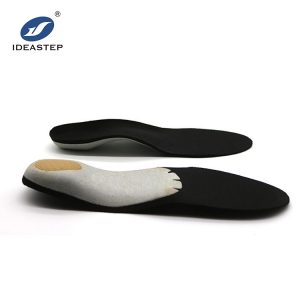
Correcting insoles, also known as orthotic insoles or orthotics, are designed to address specific foot alignment issues and provide corrective support. Here are some of the functions of correcting insoles:
1. Foot alignment correction
Correcting insoles are primarily used to correct foot alignment issues such as overpronation (excessive inward rolling of the foot) or supination (excessive outward rolling of the foot). These insoles are designed with features such as arch support, heel cups, and wedges to help realign the foot and ankle, promoting better biomechanics and reducing strain on the muscles and joints.
2. Arch support
Correcting insoles often have built-in arch support to provide stability and maintain the natural arches of the feet. This can help alleviate pain and discomfort associated with flat feet or fallen arches, as well as provide additional support for individuals with high arches.
3. Pressure redistribution
Correcting insoles are designed to redistribute pressure on the feet, particularly in areas that may be prone to pain or discomfort. By providing cushioning and support to specific areas, such as the heels, balls of the feet, or metatarsal area, these insoles can help alleviate pressure points and reduce pain.
4. Shock absorption
Correcting insoles often incorporate shock-absorbing materials or features to help reduce the impact on the feet with each step. This can be particularly beneficial for individuals with conditions such as arthritis or joint pain, as well as those who engage in high-impact activities.
5. Improved biomechanics
By correcting foot alignment and providing proper support, correcting insoles can help improve overall biomechanics. This can lead to better gait efficiency, reduced fatigue, and a lower risk of overuse injuries.
6. Pain relief
Correcting insoles can help alleviate pain and discomfort associated with various foot conditions, such as plantar fasciitis, bunions, Achilles tendonitis, and shin splints. By providing support, cushioning, and alignment correction, these insoles can reduce strain on the affected areas and promote healing.
It’s important to note that correcting insoles should be chosen based on an individual’s specific foot condition and needs. Consulting with a healthcare professional or a podiatrist is recommended to determine the most appropriate type of correcting insoles for your specific requirements.
Related product links: https://www.aideastep.com/product/orthotic-insoles-waterproof/.
